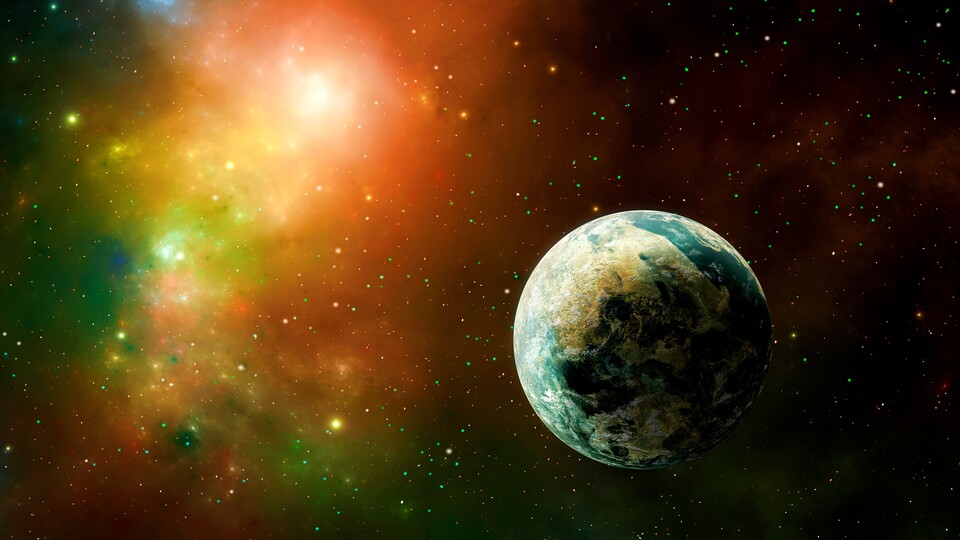
What does a 9th planet in our solar system look like? If the scientists are right, we could soon find out. (Symbolic image, source: Space Creator via Adobe Stock)
Advertisement
Despite the banished Pluto, will there soon be nine official planets in our solar system? Researchers Michael Brown and Konstantin Batygin from Caltech put forward this daring theory back in 2016.
In their new study from April 18, 2024, thanks to a simulation, they came to the following conclusion: They statistically reject a Planet 9-free solar system with a confidence level of ∼ 5 σ. In German: A ninth planet seems increasingly likely.
Why we report about it: Despite our state-of-the-art technology, a lot remains hidden from us and is waiting to be discovered every day. Will our system soon get a ninth planet (again)?
- The simulation of the new study supports the thesis from the year 2016.
- Limitation: The study has not yet gone through a peer review process.
- This means that the study has not yet been checked for errors by other researchers.
- The Vera C. Rubin Observatory will be completed in 2025 and could confirm its existence
In detail: The last planet – Neptune – was discovered in 1846. Pluto was finally discovered in 1930, but its planet status was revoked. Could there be a new discovery soon?
Advertisement
Already 2016 The assumption of Planet #9 caused a sensation when the scientists mentioned above first made their assumption public. Now they have created a simulation and according to the magazine Geo focused on the following:
The Caltech researchers simulated the orbits of the outsiders, sometimes adding another planet to their calculations and sometimes leaving it out.
The result: The simulations with a 9th planet were able to explain the formation of our solar system and the real orbits much more precisely. This is what the researchers write in their study:
Accordingly, this work presents new evidence supporting the existence of Planet 9 and describes a number of observational predictions that may be clarified in the near future.
The scientists mean that thanks to their findings, it will be possible to look for this planet more closely in the future, as they will be able to better understand the trajectory of possible planet number 9 thanks to their simulation.
Super observatory could confirm the existence of Planet #9
Observatory under construction: Strong observation devices are needed for such a distance. The new Vera C. Rubin Observatory is currently being built in Brazil and would be suitable for this, according to Geo.
Technical specs about the observatory:
- Digital camera with 3.2 gigapixels* (the LSST: Large Synoptic Survey Telescope)
- 189 individual CCD sensors with 16 megapixels each (= 3.2 billion pixels*)
- Camera is about the size of a car and weighs 2.8 tons
- Shoots images in total size 30 terabytes per night!
- Three-mirror design ensures wide viewing angle with 3.5 degrees diameter
- In comparison: the moon and sun are loud when viewed from Earth Wikipedia a diameter of 0.5 degrees
Video: Here you can see what the observatory looks like. A short clip also explains why it is so special and why science is so excited for its completion:
Link to YouTube content
However, it won't be completed until March 2025 at the earliest – so a potentially groundbreaking discovery won't happen within the next few weeks.
